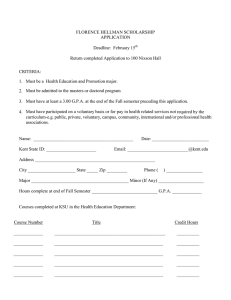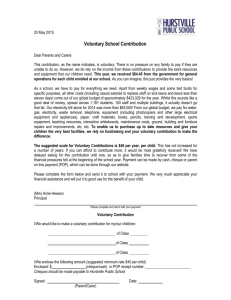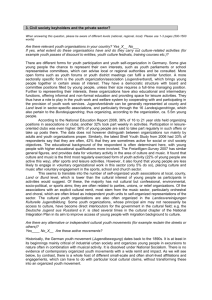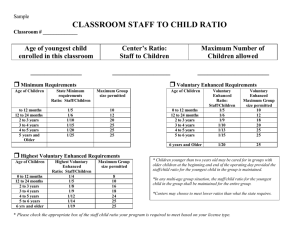Module Five – PowerPoint Presentation
advertisement
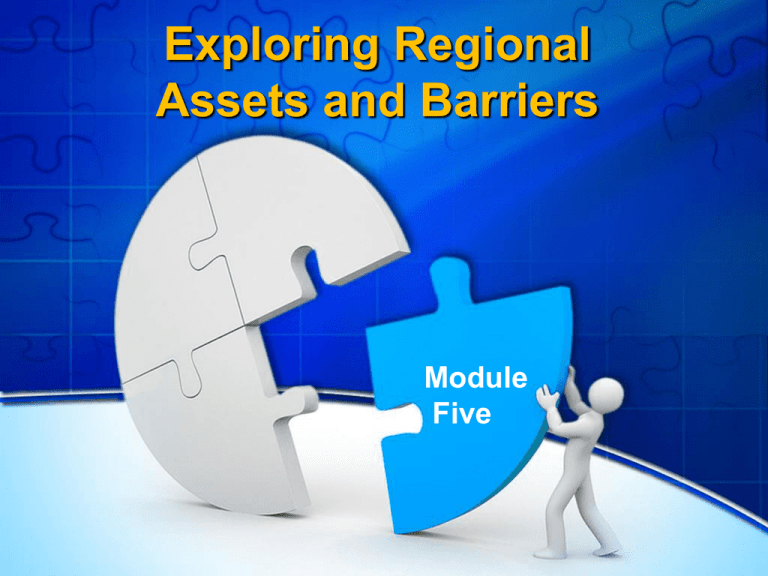
Exploring Regional Assets and Barriers Module Five Reflecting on the Last Meeting of the Team • What did you find most useful about the topic? Any items still unclear? • What did you accomplish since the last meeting? • Other thoughts or comments? Building on the SET Modules • A Snapshot of SET • Introduction to Regional Development • Building a Strong Regional Team • Developing a Regional Vision and Regional Goals • Exploring Regional Assets and Barriers What Module Five Is All About • Introduce the notion of asset-based regional development • Discover the assets that exist locally and can be mobilized to support your regional goals • Pinpoint barriers to achieving regional goals • Review goals and adjust as needed Important Principles of Asset-Based Regional Development • Many assets exists in our region (but oftentimes get overlooked). • The long-term vitality of the region depends on our ability to uncover and effectively utilize (in a sound manner) the resources we have available locally. • Taking the time to link local assets to one another improves the chances of achieving our regional goals. Three Key Arenas for Uncovering Regional Assets People Voluntary Association s Community Institutions Let’s Start with People People Voluntary Associations Community Institutions Assets of Local Individuals • Everyone has talents and skills that can benefit the region. • Strong regions value and make good use these skills. • Some tools to consider using: Mapping of the talents/skills of local people People’s involvement in community-related efforts Tools to Uncover Individual Assets • Capacity Inventory of Individuals • Community Participation and Leadership Inventory More Information on these “People” Tools Specific Tool Capacity Inventory of Individuals What It Does Zeroes in on the skills people have developed at home, work, school & other venues Community Participation Finds people that may be emerging leaders in your and Leadership region. Uncovers the Inventory leadership potential of your region. People Why It’s Important Helps find people with the mix of skills needed to get projects and programs implemented that support your regional goals Serves as the building blocks for expanding leadership in the region. Helps expand the number of people working on your regional goals. Fine-Tuning the Capacity Inventory of Individuals Assessment Tool Review the “Capacity Inventory of Individuals” survey tool Add new items; remove those not relevant to your region Develop an updated assessment tool for your team’s use Identify people in your region that you want to target Community Participation and Leadership Inventory People • A National Conference on Citizenship report states that Americans are suffering from “civic foreclosure.” They are not investing their time and resources in communityimprovement activities. • Is your region facing this same challenge? • If so, this tool can help you locate a new generation of potential leaders in your region. Can you use this tool? If so, what modifications might be needed to better fit your region? The Next Asset Mapping Area: Voluntary Associations People Voluntary Association s Community Institutions Voluntary Associations What are these? • Organizations that rely on regular or occasional volunteers; have few, if any, paid staff • Have autonomy from the state • Self-governed by a board of unpaid individuals • Tend to be a not-for-profit organizations • Provide a benefit or service to nonmembers Source: BusinessDictionary.com Voluntary Associations The Third Arena for Uncovering Assets: Community Institutions People Voluntary Associations Community Institutions Community Institutions: What Are They? Community Institutions • Patterned set of activities that are designed to meet important local needs • Provide established ways of doing things that are associated with key local functions • The vitality of a community (or in this case, a region) can be influenced by the strength of these local institutions. Source: Etzen and Baca-Zinn, 2001; Sparknotes.com, 2006 Community Institutions The following are key institutions that shape the region’s economic development possibilities Education - Faculty/staff with strong educational training; facilities for training; technology access; systems; libraries; business support services Economic - Business and financial resources; suppliers and purchasers; mentors/coaches Government/Political - Public services and infrastructure; supportive programs and policies; cooperation across jurisdictions; active citizens • Health - Access to medical facilities/services, • health personnel Uncovering the Assets of Voluntary Associations & Community Institutions • It’s valuable to assess the assets and resources that local voluntary groups and key community institutions can offer that may be of benefit to the region. • The Inventory of Local Voluntary Organizations and Community Institutions tool is a great starting point. • What information does this tool seek to collect? • Voluntary Associations Community Institutions Information on Associations and Institutions • Mission or purpose • Physical location • Number of members and/or employees • Current activities or programs • Partnering organizations • Current resources: Buildings, equipment, purchases made, areas of expertise, grants/donations available, access to external resources • Activities/programs it hopes to launch over the next 3-5 years NOTE: Any other information your group would like to collect? The Strength of Synergy • It’s important to link people, voluntary groups and community institutions together to address regional goals. • These links: Provide a diversity of perspectives. Result in more creative solutions & strategies. Build a broader-base of support and commitment to the regional goals. Linking Assets to Your Regional Goals Under each of your team’s regional goals: • List people, local voluntary organizations and formal community institutions that may have assets or resources to contribute to the goal. • Visit with these organizations to complete the Inventory of Local Voluntary Associations & Community Institutions. • Fill out information on the worksheet of assets • Add information as relevant input is collected by your team. Organizing Your Information on Assets/Resources GOAL 1: (Your Regional Goal Here) Inventory of Assets/Resources Available People Voluntary Associations Community Institutions Mapping Your Regional Resources: Google Maps? • If your team has someone who is pretty computer savvy, you might want to consider developing a map that highlights the physical location of groups that can be of great benefit to your work. • Google My Maps, for example, allows you to create place marks for different organizations that have a physical address (such as high schools, community colleges, or key businesses). • Learn more at http://maps.google.com/support Exploring Possible Barriers: The Other Dimension to Consider • Are there forces at play that might impede your efforts to achieve your regional goals? Factors within the region? Factors outside the region? • List these barriers in your worksheet by the topics. Addressing Barriers GOAL 1: (Your Regional Goal Here) Existing and Potential Barriers Category Education and Workforce Infrastructure Financial and Income Political and Legal Environmental Social and Cultural Inside the Region Outside the Region Refining Regional Goals? Given the assets that you’ve uncovered . . . and the barriers that you’ve identified. . . • Do your regional goals build on your local assets? • Do they consider the internal and external barriers? • If not, what revisions should be made to your regional goals? Refining Regional Goals Current Goal 1 Goal 2 Goal 3 Goal 4 Revised Final Reflections • What are the takeaways from our this module? • What needs to be done before the next SET meeting to build on this topic? • Other issues to clarify or discuss at this point? What’s Ahead Module Six is going to focus on data, important information on your region’s: • • • • Population Education Labor force And more!
